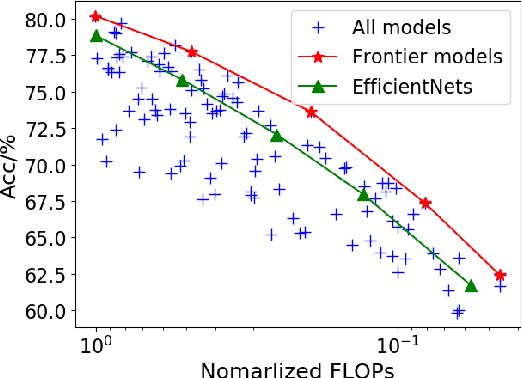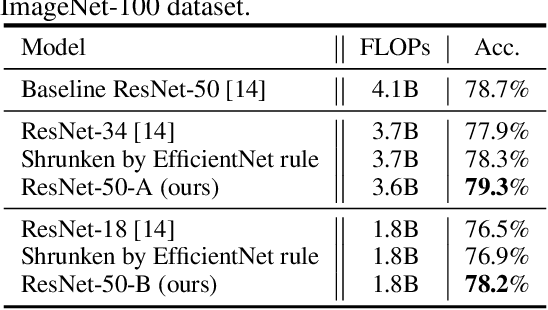Model Rubik's Cube: Twisting Resolution, Depth and Width for TinyNets
Paper and Code
Oct 28, 2020



To obtain excellent deep neural architectures, a series of techniques are carefully designed in EfficientNets. The giant formula for simultaneously enlarging the resolution, depth and width provides us a Rubik's cube for neural networks. So that we can find networks with high efficiency and excellent performance by twisting the three dimensions. This paper aims to explore the twisting rules for obtaining deep neural networks with minimum model sizes and computational costs. Different from the network enlarging, we observe that resolution and depth are more important than width for tiny networks. Therefore, the original method, i.e., the compound scaling in EfficientNet is no longer suitable. To this end, we summarize a tiny formula for downsizing neural architectures through a series of smaller models derived from the EfficientNet-B0 with the FLOPs constraint. Experimental results on the ImageNet benchmark illustrate that our TinyNet performs much better than the smaller version of EfficientNets using the inversed giant formula. For instance, our TinyNet-E achieves a 59.9% Top-1 accuracy with only 24M FLOPs, which is about 1.9% higher than that of the previous best MobileNetV3 with similar computational cost. Code will be available at https://github.com/huawei-noah/CV-Backbones/tree/main/tinynet, and https://gitee.com/mindspore/mindspore/tree/master/model_zoo/research/cv/tinynet.
 Add to Chrome
Add to Chrome Add to Firefox
Add to Firefox Add to Edge
Add to Edge